F1 2016 for Mac by Feral Interactive
F1 2016 for Mac
Feral Interactive
Price: $59.99 on Steam, $44.95 on Mac App Store
F1 2016 by Feral Interactive is a racing game based on the 2016 Formula One season. It features real tracks, real cars, and real drivers from the world’s most prestigious racing series. Created by Codemasters for the Xbox, PS3/4, PC, and Steam platforms, F1 2016 has been ported to the Mac by Feral Interactive. While not a complete simulation in terms of car adjustments and difficulty, it is much more a simulation than an arcade game. There is much realism in this game, with a corresponding learning curve.
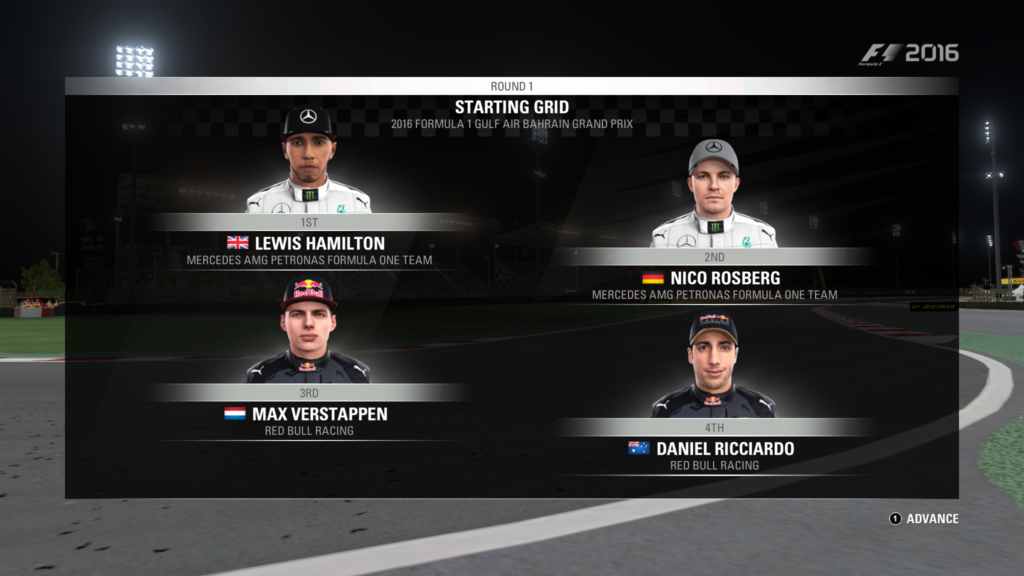
Shortly after starting play with F1 2016, I saw myself morphing into Sebastian Vettel in Baku — boiling over into a frothing, irrational, wheel-bashing fury, but multiplied times ten. My poor daughter saw it too, as she had the bad luck of trying to play Minecraft on her computer next to me while I raged and yelled at my screen. I’m adult enough to admit it wasn’t my finest moment.
Once I started getting the hang of controlling a virtual Formula One racer with the wildly sensitive joystick on my Logitech F310 gamepad, things became a lot more pleasant in my household. Initially, I couldn’t see how I was going to be able to write an honest review about this game, because I couldn’t even really play it. Despair began to set in. Fortunately for my entire family’s sanity, it didn’t take long for things to start to click, and my fingers started dimly comprehending what my eyes were telling me: anything more than gentle nudges on the joystick when making slight directional corrections on the straights would result in immediate disaster.
Controlling the cars in F1 2016 really does take practice. In the beginning, I struggled so much I believed I designated myself the official Jolyon Palmer of the F1 gaming world, so much so that I decided to make it official and drive a Renault. By the way, that’s not meant as a value judgement on Jolyon Palmer. I like the guy, and I’d like to see him get it together and succeed. He is, however, not having the best time in F1 right now, and my beginner phase with F1 2016 made me deeply sympathetic to his plight. If F1 2016 had reserve drivers, I’m pretty sure mine would have taken my place immediately after the first Grand Prix of the season.
It’s thanks to Feral Interactive that I have this opportunity to fail, shine, or just exude wild mediocrity, for they are the kind coding wizards who have made Codemasters F1 2016 available on the Mac. Let me strongly emphasize that my Vettelesque rage is in no way their fault. They’ve done a masterful job of porting this game.
F1 2016 for Mac is available from Feral on both Steam and Mac App Store platforms. I opted for the Mac App Store version of the game as I don’t currently have Steam on the Mac, and prefer to keep it that way. Both versions have advantages and disadvantages — I’m not exactly a Steam fan for security reasons, but buying Steam version will surely result in more online multiplayer opportunities. It costs $45 on Mac App Store, and $60 on Steam, another point in favor of the Mac App Store flavor of the program.
For players opting for the Mac App Store alternative rather than the Steam version, Feral has Calico, a multiplayer service for their games sold through the Mac App Store. Calico only supports Mac games sold through the Mac App Store, which means no on-track battles against friends on other platforms (including the Steam version for the Mac).
Compulsory unavoidable tech talk here:
My review setup for the Mac version of F1 2016 by Feral Interactive is a late 2015 27†5K iMac with 4 Ghz Intel Core i7, 32 GB DDR3 RAM, AMD Radeon R9 M395X 4096 MB, and an SSD drive. I also have, as mentioned earlier, a Logitech F310 Gamepad which I’ve probably almost snapped in half playing this game by squeezing it so hard.
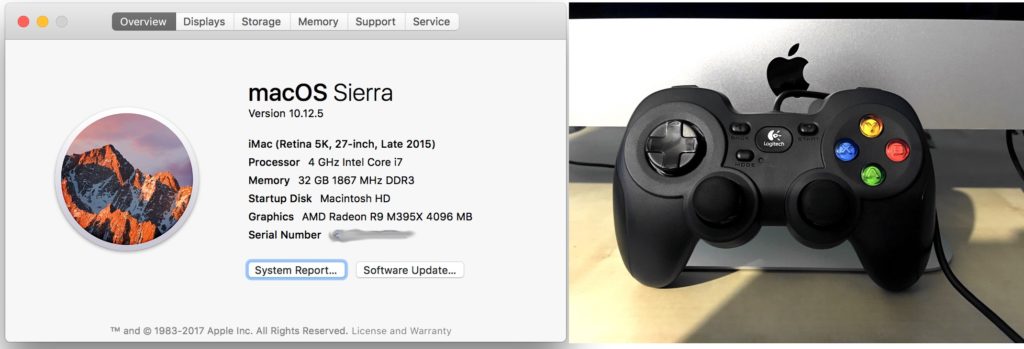
Up until about a month ago, this Mac was the best gaming Mac you could get for the past two years. Even so, a lot of graphics options such as ambient occlusion are disabled, and others are dialed down to medium quality levels. I’d love to see how the top configuration 2017 iMac fares comparatively.
One thing I should note here, as long as I’m boring you with spec talk — F1 2016’s recommended settings for my Mac are far lower than what is actually easily possible while retaining high frame rates, smooth play, and much more enjoyable and realistic graphics. F1 2016 set me up for the Medium quality graphic preset with a resolution of either 1024 x 756 or 1900 x 1200 (I can’t recall which now), but I was able to bump this up to the High preset and 2048 x 1152 resolution. Not only did I experience no slowdown in performance, the game looks much better too — the glaring sun and the reflections in the car’s paint job alone are well worth the adjustment. It’s truly immersive and attractive.
Okay. Enough technobabble. What about the gameplay?
If you’re familiar with the Codemasters F1 line of games, you already know a lot about F1 2016. There are several gameplay modes – Career, Championship Season, Quick Race, Time Trial, and Multiplayer. You can pick a team, pick a face to represent you, and choose a helmet style and customize its colors. Play options abound, which is immensely helpful for learning the game and getting past the awkward and uncomfortable rage phase.
In F1 2016, you can become especially immersed in the game thanks to Career mode. You’ll be given goals by your team to beat, given achievement points that you can spend on car development, and interact with members of your team in the team hospitality suite.
Driving takes practice, and there’s plenty of opportunity for it here. Time trial options allow for unlimited familiarization at any track, and even within a race weekend in Career or Championship modes, you get the standard 3 free practice sessions followed by qualifying. Generally speaking, the free practices are more than enough to become familiar with a circuit and whittle down your lap times.
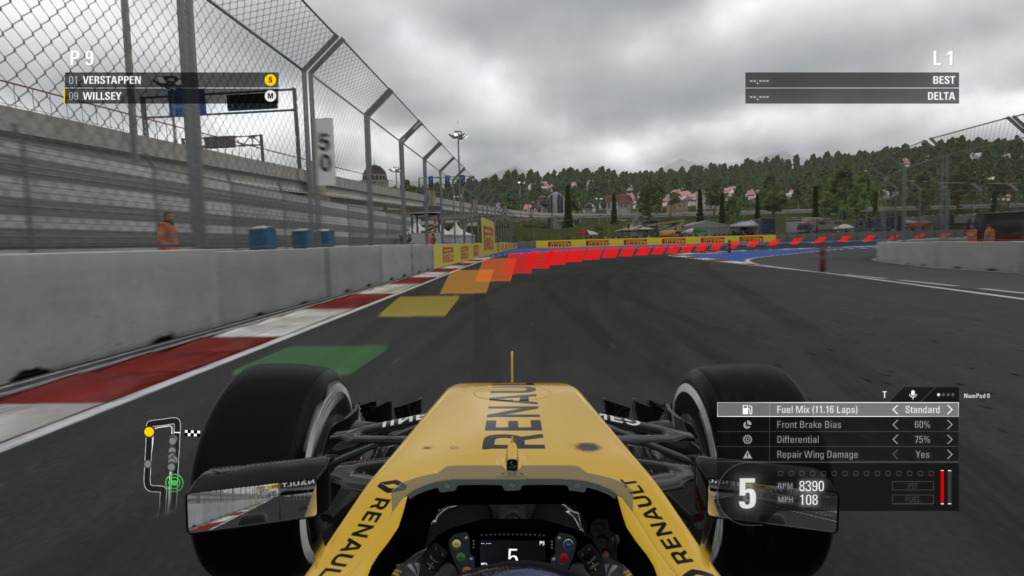
One of the least enjoyable aspects of a Grand Prix weekend in F1 2016 comes in the form of team requested development programs, mainly aimed at tire wear studies and qualifying trim tests. I’ve only tried two or three tire wear study runs and failed to hit the team targets every time. I’m always either pushing too hard and running into the red zone on tire wear, or I back off a tiny bit too much and miss the time target by a couple thousandths of a second. The window for hitting the correct compromise of speed and tire conservation feels narrow.
There are also track acclimatization runs the team will request of you during free practice sessions which consist of a series of laps on your tire of choice in which you try to drive through target zones on the track to become familiar with the proper racing line. I find these track acclimatization runs frustrating and annoying, however — the extended racing lines and the target zones distract me and I often have a wider line around some bends than my team apparently would like. However, if you want to accumulate points in order to aid car development progress, these sessions can be helpful. Otherwise, just go crazy in free practice with fast runs and you’ll learn the track quite well in three or four laps.
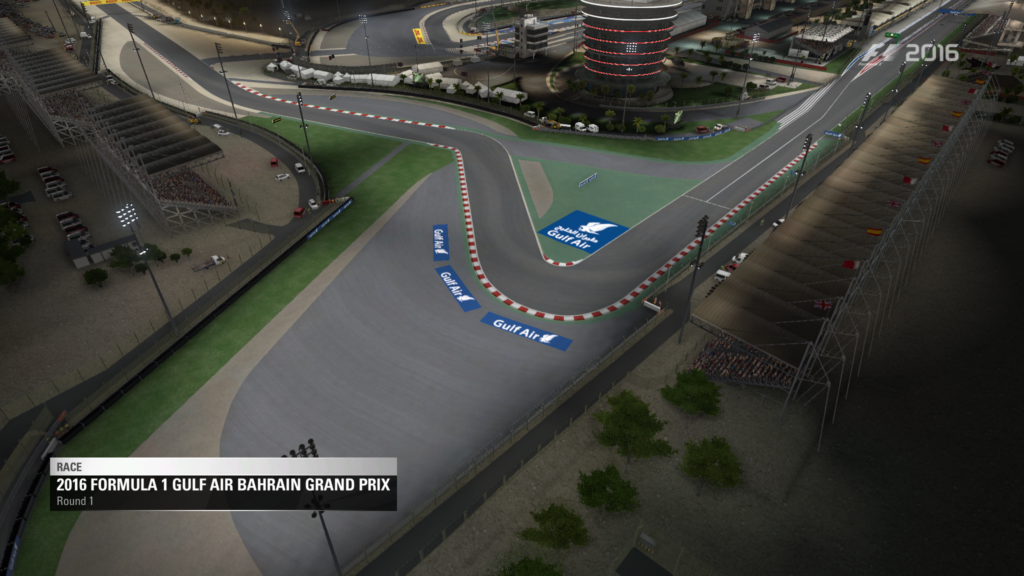
Racing in F1 2016 can be intense, even if you’re not going wheel to wheel with your opponents. If you don’t focus and stay on line, bad things that cost you a lot of time can happen very quickly. There’s a reason you sometimes hear real Formula One drivers telling their engineers to stop talking to them while they’re in a turn. I have no idea how actual F1 drivers manage the settings on their steering wheels while racing around the circuit — I initially had a hard time just digesting information in the game’s Car Status heads-up display while trying not to go off the road.
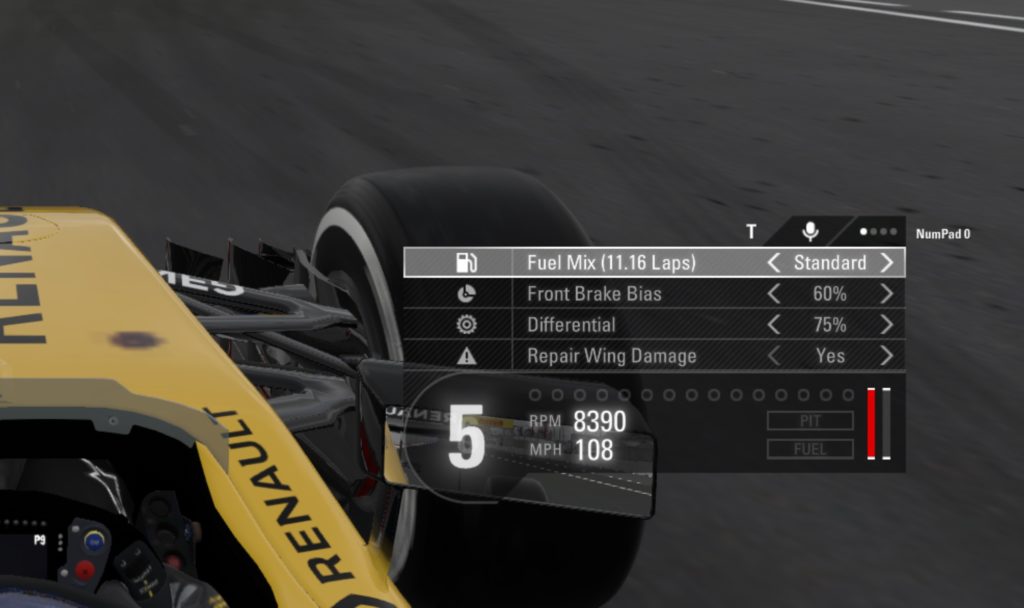
For the most part, the controls in F1 2016 quickly become second nature. Navigating your way through a race weekend in Career mode involves knowing which buttons to push while in the pit to see session information or to change car setup or to select a development program, or to exit the pits to do a flying lap. Then there’s the out-of-car scenes in the team area between sessions in which you must find out the team session goals and check your progress on the laptop. The laptop is also used to choose to move on to the next session in the race weekend as well. Fortunately, there are prompts on screen to remind you of which buttons control each function, and it soon becomes muscle memory anyway.
In terms of controls, the biggest challenge inside the car is getting used to racing with a gamepad (unless you have enough disposable income to make buying a $200+ gaming wheel seem like a good investment). Rest assured that you will become quite good at correcting car slides, performing subtle inputs, and setting the car up properly for approaching turns, but it takes practice. It’s a good idea to drive some time trials as car control practice sessions.
It was during my own early familiarization process that I thought I was going to smash something expensive repeatedly and then rage quit to a life of never-has-been shame. Playing an F1 computer game with a gamepad is a new experience for me. I’ve always used a wheel, or (way back in the day) a real old-school gaming joystick with resistance and a long throw. I found the new method challenging at first, to put it mildly. Even in the dry, I found myself shooting from one side of the track to the other, as though I had a broken suspension, or a wobbly rocket engine on the back of the car launching me in random directions. Riding up on the outside curb on the exit of a corner was enough to heave me back towards the inside wall. It was maddening.
It doesn’t help that the first race of the season is in Melbourne Australia, a narrow, winding street track that is tricky in the dry and downright treacherous in the wet. I never finished that rain-soaked race — I was trying to move out of (guess who?) Vettel’s way as he came around to lap me, and somehow we tangled. I could make a point of the fact that he hit me up the back, which is apparently becoming a thing of his, but I won’t. I’ll hold up my yellow-gloved hand and take the blame.
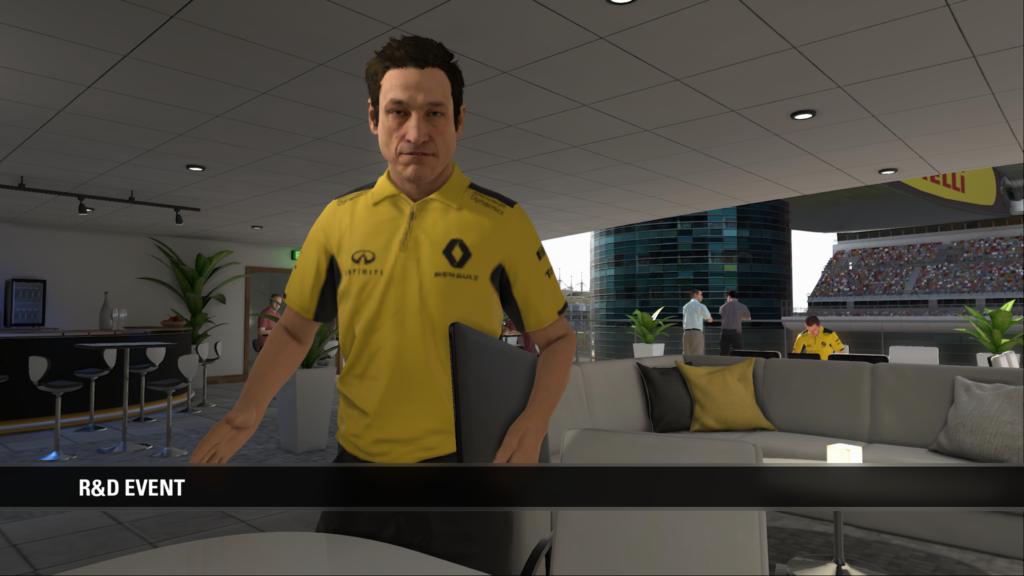
Fortunately, I managed to suck it up and start clawing myself out of Maldonado territory. At the second race of the season, using customized settings (still skewed towards rookie level), I qualified on pole, and won comfortably despite being out-dragged by the Mercedes cars at the start and having to follow Hamilton around behind the safety car for what seemed like at least 7 of the 14 laps, but was actually laps 9 – 12, I believe. It only felt like forever.
Thinking maybe I just happen to be more like Kimi Raikkonen than Jolyon Palmer — performing well at the fast, swooping circuits, like Silverstone and Spa Francorchamps — I figured the third race of the season in China would be instructive. I qualified on pole after earlier blowing everyone away in a wet free practice 3 session, so apparently my improvement was real. It doesn’t take more than a few races before you’ll start wanting to increase the AI skill level and turn off some of the driver aids. This is really good news, because F1 2016 offers lots of overhead in terms of difficulty. You can make the game quite demanding on your abilities.
The good news about F1 2016 is that even as you progress and gain confidence, the game is still intense. You may at times find yourself gripping your controller so tightly during a wheel-to-wheel battle with an opponent that the plastic in the gamepad has to defy physics in order not to snap in pieces. More than once after a game, I had to perform hand exercises in order to declaw my fingers back into the desired straight extended configuration. Most gamepads have similar ergonomics, so I don’t blame this on my particular controller. A steering wheel controller and pedals would greatly help with this, but they aren’t cheap and not many people will probably opt for them over a standard gamepad.
Multiple camera angles are available for your driving pleasure, including a realistic in-cockpit view, a slightly higher on-car camera view, and some other more arcade style rear views. Personally, I found using the in-cockpit camera view very difficult, more so than other in-car F1 games I’ve played in the past. F1 drivers sit extremely low in their cars, they can’t see their noses or even get a decent view of the track right in front of them, and it definitely takes some getting used to. I find the on-car camera view still realistic but much more drivable.
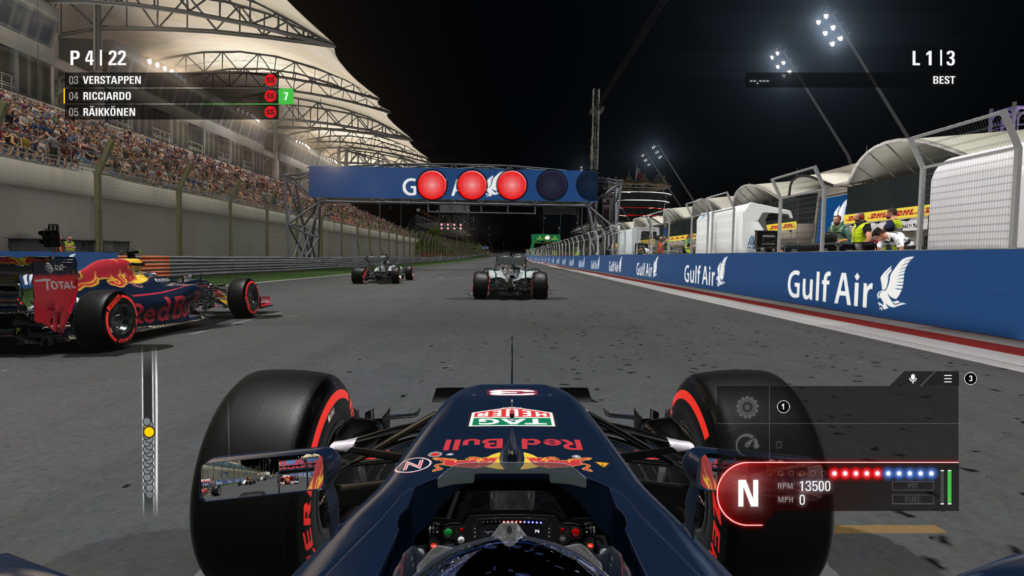
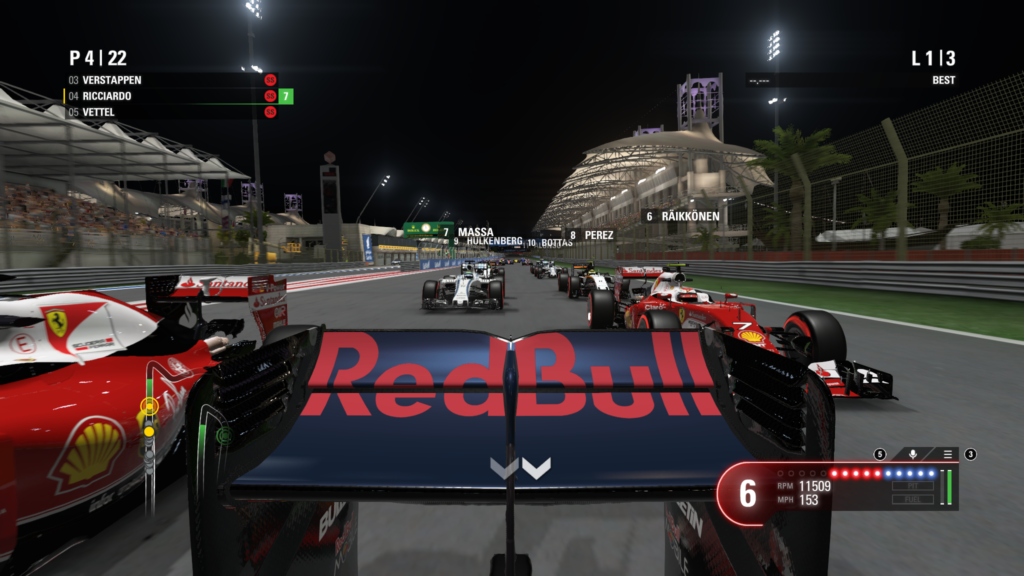
AI in racing games is always ripe for disaster. The difference between a fun, immersive, believable experience and one that’s laughably bad can easily be determined by the computer controlled drivers. Over the years there have been many racing games that have presented excellent car feel and track realism, only to offer a lineup of complete bozos who shouldn’t be left in charge of a golf cart, let alone an 800+ horsepower Formula One racing car. So far in my experience with F1 2016, I think Codemasters and Feral Interactive have managed to avoid the curse of faulty AI pretty well. It’s not perfect, but no racing game is. If the AI drivers suffer any flaw, it’s a bit too much aggression at the start where they sometimes seem completely unable to avoid first turn accidents.
At my first career mode race in Melbourne, I kept colliding with other drivers, especially on race day in the rain. I had a sinking feeling watching the AI drivers weaving about trying to figure out how to get past me or how to let me past. Afterwards, however, I played a couple one-off races as Daniel Ricciardo in the Red Bull, and the opposition was controlled and measured in response to my wheel to wheel aggression. I went wheel to wheel with Hamilton on the inside of a turn at Bahrain, and he sensibly backed off and conceded the turn when I pushed him wide rather than crashing into me or going off-track. In fact, in most of the races I’ve driven so far, the AI has been either really good or at least acceptable. I think it has a lot more to do with my increasing ability to control my car and keep it on a line than just the AI per se.
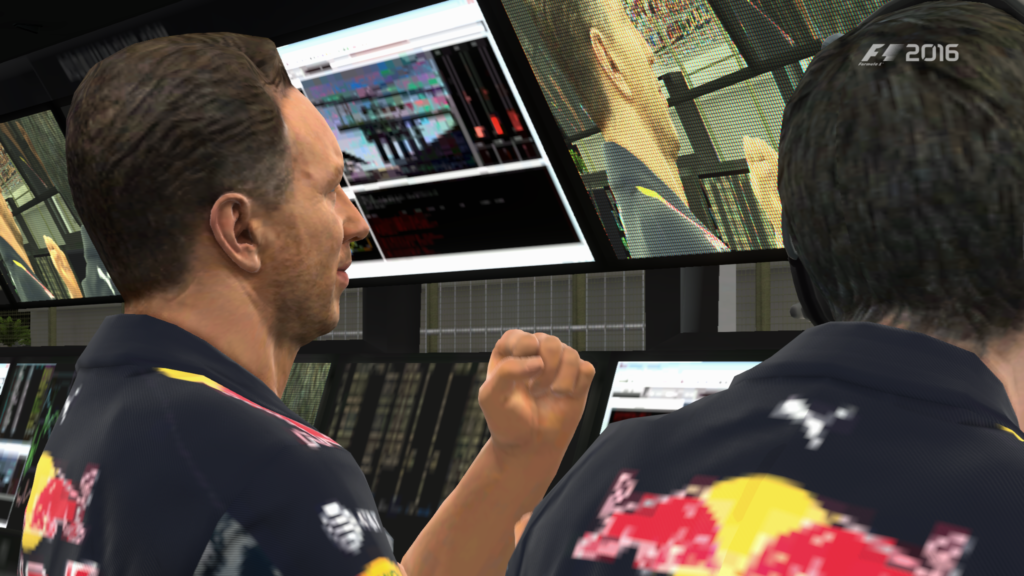
Now comes my failing as a reporter of truth and a reviewer of games — F1 2016’s online multiplayer capabilities. I never tried them. It’s not that I didn’t try, it’s that I chose unwisely. Had I installed the Steam version instead, I probably would have found lots of random players online, ready and willing to remind me of my deficiencies as an F1 driver. However, on Calico, there was never anyone online at my skill level. Maybe if I were in expert mode, but I doubt it. The Calico scoreboard shows me a grand total of 298 other players that I’m being ranked and rated against, and those 298 people are the total population of potential human adversaries as well. I’m positive that wouldn’t be the case with Steam, since the Steam version allows cross-platform multiplayer games. It’s my fault, and I once again hold my yellow-gloved hand up to take the blame, but it does mean that I can’t talk about it knowledgeably or even at all.
I apologize unreservedly.
Fortunately, there are lots of F1 2016 multiplayer videos on YouTube to spark your imagination. Just know that if you opt for the Mac App Store version of the game using Calico rather than buying the game for the Steam platform, you’re going to need to find some friends who are willing to do the same if you really want to enjoy multiplayer racing. Nevertheless, given the lower price of the Mac App Store version, unless you know you’re going to want to play against strangers online, the Mac App Store version of F1 2016 is probably the better value.
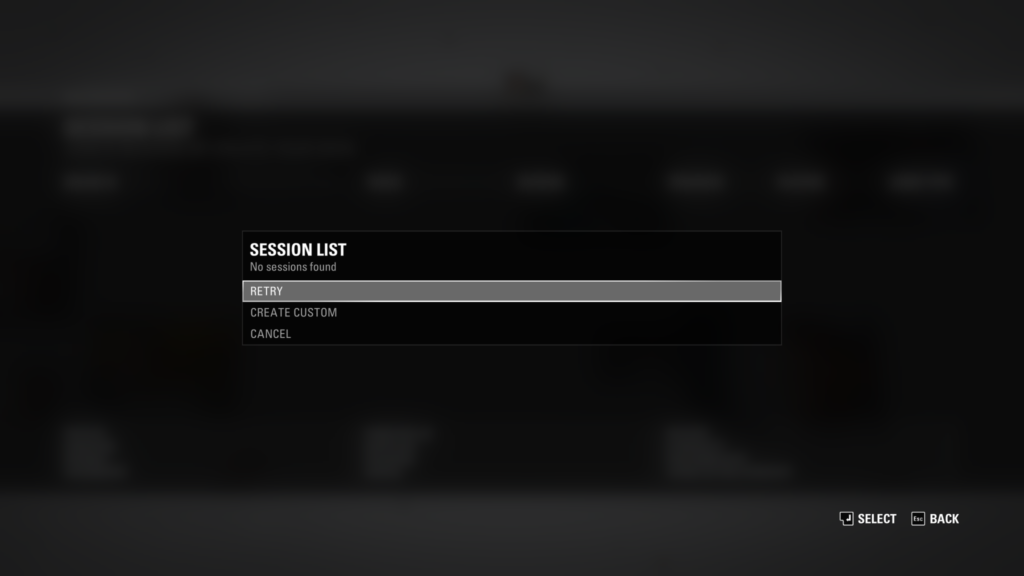
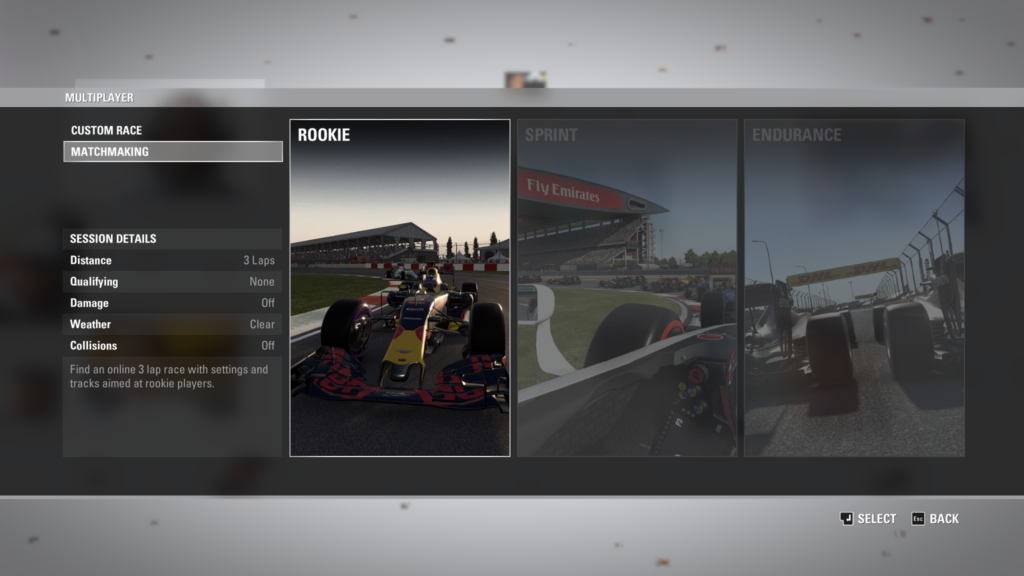
In the end, my criteria for judging this game are simple. F1 2016 makes me feel like an F1 driver. I love diving into a corner, shoving aside an opponent, and looking back at him disappearing into the distance as I exit the turn and race away. F1 2016 brings out the competitive beast in me, and I boiled with rage early on when the competition was able to trounce me easily. The fact that Feral Interactive brings this experience to Mac owners is huge.
Gamers have always had reason to laugh at the Mac gaming situation, at least for the past couple of decades. Apple tends to go in cycles with Mac hardware, and the past few years have seen Macs somewhat incapable of playing the most demanding games, even if they were available. Now things are changing again, at least with the iMac, but until mid-2017, only the highest-end iMac would do a passable job of handling a game like F1 2016. My iMac is the most spec’d out late-2015 iMac that money could buy, and it handles F1 2016 very nicely, but I’ve also tried it on a very nice, but less powerful iMac (3.2 GHz Core i5, Radeon R9 M390 2GB) and the difference is noticeable. This is not a game you’re going to enjoy or even be able to play on your Mac mini.
I don’t know what the sales numbers are for a game targeted at F1 loving Mac owners, but I certainly hope they’re good enough to justify more of this series on the Mac in the future (not to mention occasional updates to the existing games). I’ll admit that, although I love a good, realistic F1 racing game as much as the next person, I originally thought I’d play F1 2016, have some laughs, write a review, and delete it from my Mac. That’s not going to happen now. I love this game. Feral Interactive both inflicted and cured my Vettel rage, and I wouldn’t have it any other way. Now that Apple has recommitted at least the iMac lineup to capable graphics cards and performance oriented hardware, I hope the gaming future for the Mac, including the ongoing availability of the F1 series of games, is bright.
I would give F1 2016 for Mac by Feral Interactive two thumbs up, but I don’t dare remove them from my controller. I’ve got a race to win, after all.
My Mac Review Rating: 8 out of 10
https://youtu.be/QQdCPHEGfdg

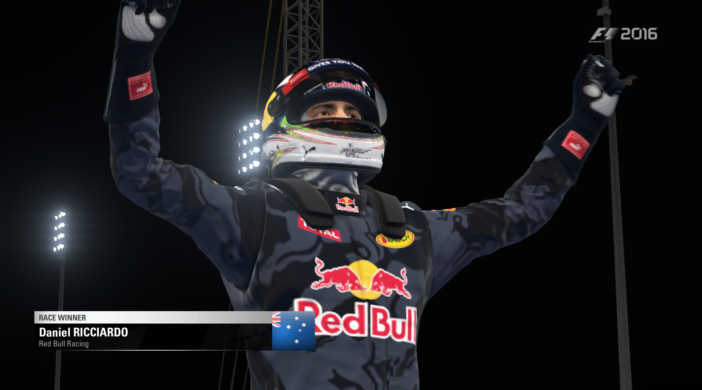
Leave a Reply
You must be logged in to post a comment.